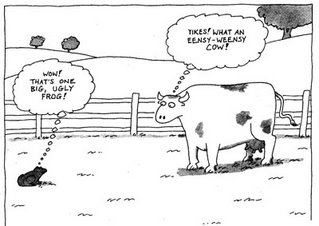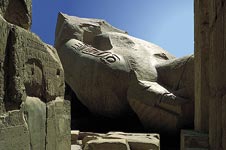From October 21, 1965 to October 10, 1968, Helen Schucman, the scribe of
A Course in Miracles, wrote down the words of an internal voice, Jesus,
the timeless voice of resurrected mind. (Master Teacher, Jesus is Speaking) These words constitute the Text of the Course.
At this point Helen had no idea that Jesus would dictate anything else. But over the next few months, she began to think that a Workbook would follow. From May 26, 1969 to February 18, 1971, she dutifully listened to Jesus speak to her the words of the Workbook. As Jesus says in His Introduction,
The Text provides a theoretical foundation for the Workbook, a framework to make the exercises in this Workbook meaningful.TheWorkbook is divided into two main sections, the first (Lessons 1-220) dealing with the undoing of the way you see now, and the second (Lessons 221-365) with the acquisition of true perception.The purpose of the workbook is to train your mind in a systematic way to a different perception of everyone and everything in the world. (W-p1.Intro.1:1,3:1,4:1)Where do you think Jesus begins this monumental task of mind training?
Jesus begins His lessons by confronting a truth that you take to be self-evident--that seeing is believing. You see in the world what you believe is there, and you believe it is there because you see it. This circular reasoning is your personal
declaration of dependence. You hold this "truth" to be self-evident--you believe that the world of matter is external to your mind because you see it out there. This "truth" is buried in the very words we use. In fact, "evident" comes from the Latin,
videre, meaning. "to see." The dictionary goes on to say, "Evident implies presence of visible signs that lead one self to a definite conclusion."
Jesus begins by forcing you to confront this premise with the title of His first lesson:
Nothing I see means anything.This is where the undoing must begin, the dismantling of an entire belief system that you began to construct as a child with the positive reinforcement of those around you, particularly the adults. Here is the title to Lesson 2:
I have given everything I see all the meaning it has for me.There is one sentence in Lesson 2 that stops me every time.
If possible, turn around and apply the idea to what was behind you. (1:5)
My God. . .
what was behind you! So, I walked into the room, seeing this thing and that thing, and then I sat on the couch facing forward, looking out the window, and what I saw on the way in is not there now; it is not there
until I turn around and look at it again!
We are only in Lesson 2, and Jesus is demonstrating to us that an object we believe to be in the external world is there
only when we see it, evidently.
What
was behind you, Dear Reader, is not there now.
This sentence came to mind again the other day when I watched a twenty-four minute film entitled,
The Holographic Universe: Beyond Matter. (You can view it when you wish by clicking on the link at the end of this post.) Here are a few passages from the film relevant to us now, as we are engaged in the great
undoing.Man is conditioned right from the beginning of his life that the world he lives in has an absolute material reality. So he grows up under he effects of this conditioning and builds an entire life from this viewpoint. At the instant of seeing, light clusters called photons travel from the object to the eye, where they are focused on the retina. Here rays are turned into electrical signals and turned into neurons at the back of the brain. The act of seeing actually takes place in this center of the brain. All the images we view in our lives are actually experienced in this dark place of a few cubic centimeters. When we say we see, we actually see the effects of the rays being converted into electrical signals in our brain. We view a colorful and bright world in our brain only as electrical signals. We see an electrical copy and assume that this copy is real matter. Perception is a mirror, not a fact. (W-p2.304.3)You see what you are looking with.
Nothing I see means anything.In
a few cubic centimeters in the back of your brain you make up an entire world with just a glance. That's it. What is captured in that glance is all there is of the evident world. And just because you see it does not mean it exists; it just means that you made it up by the interaction of your visual apparatus, i.e., the electrical activity of the brain and the stimulus of the objects, interpreted by your thoughts.
“Perceive derives from the Latin,
percipere, meaning, “to take thoroughly.” We take meaning, thoroughly, from what appears to be external by our interpretive thoughts.
Yet, Jesus tells us,
These thoughts do not mean anything. (Lesson 7)Jesus forces us to focus on the one thing that we can tangibly grasp, a
glance.Look around you, this time quite slowly. Try to pace yourself so that the slow shifting of your glance from one thing to another involves a fairly constant time interval. (W-p.1.12:2,3)Each practice period should begin with a slow repetition of the idea for today (I do not know what anything is for) followed by looking about you and letting your glance rest on whatever happens to catch your eye, near or far, "important" or "unimportant," "human" or "nonhuman." (W-p1.25.6:2)Jesus teaches us to let everything else go and just focus on one glance at a time. This makes the great task manageable.
Here are more passages from the film.
The bird we see is only an interpretation electrical signals in our brain. In reality this bird is not in the world but in our brain. If the sight nerves traveling to our brain were disconnected, we would no longer see the bird. The only reality we cope with is the world of perceptions within our minds. We believe in a world of objects just because we perceive them. Our perceptions are only ideas in our minds, so objects are nothing but ideas, and these ideas are nowhere but in our minds. We are beguiled by our perceptions.A glance is simply a combination of the electrical interaction between our brains and objects, and our interpretation of these impulses. This involves interpretation, associations, and judgment.
The following cartoon from
The New Yorker humorously demonstrates how our interpretations and judgments determine what we see.

You see what you are looking with.
I do not understand anything I see in this room. (Lesson 3)The point of the exercises is to help you clear your mind of all past associations, to see things exactly as they appear to you now, and to realize how little you really understand about them. It is therefore essential that you keep a perfectly open mind, unhampered by judgment, in selecting the things to which the idea for the day is to be applied. For this purpose one thing is like another; equally suitable and therefore equally useful.(W-p1.3.2)These thoughts do not mean anything. (Lesson 4)Merely glance casually around the world you perceive as outside yourself, then close your eyes and survey your inner thoughts with equal casualness. Try to remain equally uninvolved in both, and to maintain this detachment as you repeat the idea throughout the day. (W-p1.33.2)The arbitrariness of what is seen in the physical universe is a function of the seeing apparatus interacting with the incoming data. This was brought home to me in a recent article in Sunday's
Parade magazine entitled,
Seeing the World as Your Pets Do. In this case, the number of color receptors in the vision apparatus determines what is seen.
If your dog could tell you what he sees, he'd probably describe a fuzzy world of blues and yellows in the daytime. In dim light, dogs can see more shades of grays than we can. Our eyes are better at discerning colorful details in daylight. We also can see things quite close up while dogs cannot. What makes the difference? Simply put, humans have more color receptors than dogs.In contrast, your cat, a nighttime hunter, can see clearly in conditions six times darker than we can. Those vertical slit pupils allow a cat's eyes to take in more light at night. Given the type and number of their color receptors, cats probably view the world in a pastel palette and don't see some colors at all. An apple tree laden with red fruit, for example, would appear light-colored with dark apples to your cat. (Parade, October 15, 2006, p. 14)Here are more passages from the film.
The act of seeing actually takes place in the center in the brain. All the images we view, and all the events we experience in our lifetime, are actually experienced in this tiny and dark place. Both the film you are now watching and the boundless landscape that you see when you gaze at the horizon actually fit in this place of a few cubic centimeters. When we say we see, we actually observe only the electrical signals in our brain. The brain is sealed to light and its interior is absolutely dark. It is never possible for the brain to contact with light itself.You can see what we are up against. We are always only looking at a screen in the back of our heads, viewing our projections, and since we find it self-evident that seeing is believing, we have a lot of work to do. But remember, Jesus is providing us with a systematic mind training.
In Lesson 7,
I see only the past, is a summary of the first six lessons.
This idea is particularly difficult to believe at first. Yet it is the rationale for all of the preceding ones.1) It is the reason why nothing that you see means anything. 2) It is the reason why you have given everything you see all the meaning that it has for you.
3) It is the reason why you do not understand anything you see.
4) It is the reason why your thoughts do not mean anything, and why they are like the things you see.
5) It is the reason why you are never upset for the reason you think.
6) It is the reason why you are upset because you see something that is not there.All that is required is that we practice with determination and perseverance. Along the way, analogies are useful. For example,
We are such stuff as dreams are made on. (The Tempest) Here is another passage from the film.
If we are able to live easily in a dream the same thing can equally be true of the world we live in during our waking dream. When we wake up from a dream, there is no logical reason in not believing that we have entered a longer dream that we consider life. The reason we consider our sleeping dream to be unreal is nothing but a product of our prejudices. When we begin to experience the unreality of our waking life, we begin to see how much it resembles our sleeping dreams. This analogy is so helpful because when you are lying in bed asleep, dreaming, you cannot very well blame anyone else for your dream, and no one else could possibly be dreaming your dream. It is a a very private affair. Your waking dream is no different. You are going it alone, and you are totally responsible.
I am responsible for what I see. I choose the feelings I experience, and I decide upon the goal I would achieve. And everything that seems to happen to me I ask for, and receive as I have asked. (T-21.11.2:3-5)This is my statement of total responsibility for accepting my declaration of dependence on the premise that seeing is believing.
Good! Since you are totally responsible, you can learn to wake up to the truth of what you are, and that is also the value of the sleeping dream analogy. When you first wake up from a sleeping dream, it takes a moment to shake off the realness of it. But when you realize it was a dream, it is totally gone. The waking dream also fades in the moment of realization that seeing is not believing, and interpretation is not real. When you realize this, you simply shift to another place in your mind that is always, already present. You become aware of a state of mind that is your natural inheritance. When you by-pass, or forgive, the "I" of that interpreter, you become aware of "I" as created by God.
I am not a body. I am free. For I am still as God created me. (Lesson 201)I was created as the thing I seek. (Lesson 318:5)I remain as God's son, even though I wandered off into believing that what I was seeing was real, and it was simply a projection of my brain, having no source in reality.
God is my Source. I cannot see apart from Him. (Lesson 43)I cannot see apart from God, and I can learn to
see with
true perception, and that is where Jesus is leading me.
You see what you are looking with.
What we are searching for is the one that sees truly. (St. Francis)This is truly the secret beyond matter.
We are nearing the end of Part 1. In order to undo the way you see now. Jesus necessarily had to make us aware of the fact that we are now seeing falsely. The good thing is that the way we see now, though false, can be used in such a way that we can learn to see with vision,
the acquisition of true perception.I urge you now to click on the link below to view the film, and I offer this caveat. The last four minutes attributes everything to Allah. Since I am unfamiliar with this tradition, I cannot comment. Rather, I do invite you to read the first four stanzas from the inspiring hymn written by the Swedish pastor, Carl Boberg in 1886,
How Great Thou Art.O Lord my God! When I in awesome wonder Consider all the worlds Thy hands have made. I see the stars, I hear the rolling thunder, Thy power through-out the universe displayed. Then sings my soul, my Savior God, to Thee; How great Thou art, how great Thou art! Then sings my soul, My Savior God, to Thee: How great Thou art, how great Thou art! When through the woods and forest glades I wander And hear the birds sing sweetly in the trees; When I look down from lofty mountain grandeur And hear the brook and feel the gentle breeze: Then sings my soul, my Savior God, to Thee; How great Thou art, how great Thou art! Then sings my soul, My Savior God, to Thee: How great Thou art, how great Thou art! Part 2 clearly and forcefully demonstrates how to forgive a glance and learn to see with vision.
To see the film, please click on the link below:
Click here to Watch Video










